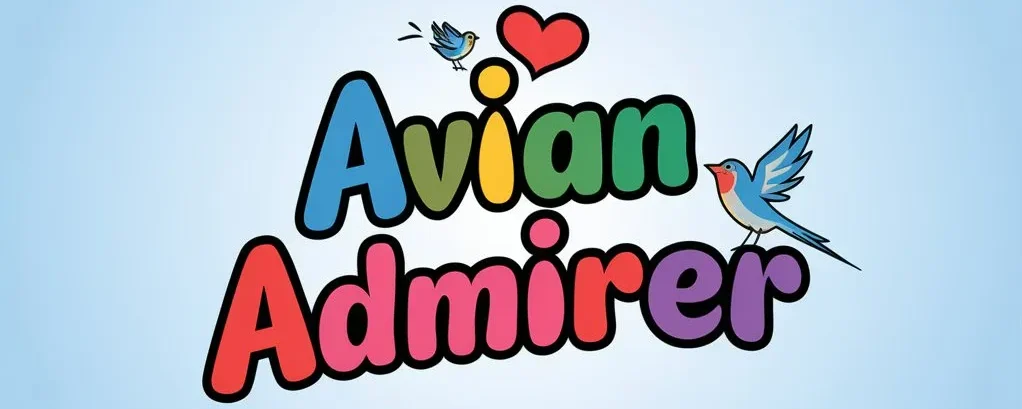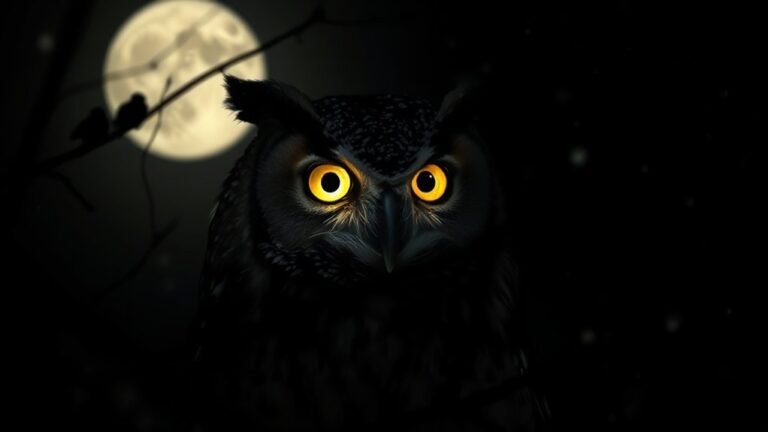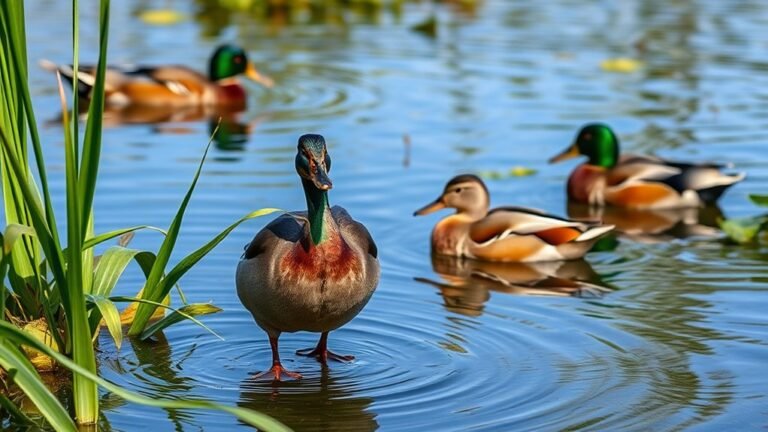How Many Crows Make a Murder? Facts & Mythology
The term "murder of crows" refers to a group of crows. This phrase started during the Late Middle Ages. It links crows with death and bad luck. However, crows are not just symbols of sadness. They are smart and social birds. Their behavior shows they have interesting traits. This raises questions about how we view these birds. Exploring the facts and myths about crows can provide new understandings.
Key Takeaways
A "murder of crows" is the term used for a group of crows. This term comes from beliefs in the Late Middle Ages. There is no required number of crows to be considered a "murder." Any gathering of crows can be called this.
Crows are very intelligent birds. They have complex social structures. They often gather in large groups to help each other survive.
In various cultures, crows symbolize death, transformation, wisdom, and trickery. Myths and stories about crows inspire imagination. They are often seen as links between the living and the spiritual world.
The Origin of "Murder of Crows"

The term "murder of crows" is intriguing and raises questions about its origin. This phrase is a collective noun, a type of term that describes a group of animals.
During the Late Middle Ages, people created colorful and often playful names for groups of animals. These terms reflected beliefs and behaviors of the time.
The word "murder" carries a dark meaning, likely due to crows being associated with death as scavengers. This name highlights their role in nature.
The use of collective nouns also aimed to showcase the unique traits of different species.
Understanding where these terms come from helps us connect with language and appreciate the relationship between humans and animals over time.
The Intelligence of Crows
Crows are highly intelligent birds. Their problem-solving skills are similar to those of some primates. They can tackle tasks that require multiple steps. For example, studies show that crows can use tools to get food. They bend wires into hooks or drop stones to raise water levels. This shows their ability to use tools effectively.
Crows can recognize individual human faces, which helps them adapt to city life. They communicate with each other and often work together to find food.
Watching crows can help us appreciate their connection to their environment. Their intelligence adds depth to our understanding of birds.
Crows in Mythology and Folklore

Crows are known for their intelligence, and they hold significant meanings in mythology and folklore. Different cultures view crows in various ways:
- In Norse mythology, Odin has two ravens named Huginn and Muninn. These birds symbolize thought and memory, connecting crows to wisdom.
- Native American stories often depict crows as tricksters and spiritual messengers. They play an important role in creation tales.
- Many societies see crows as omens, linking them to death and transformation. This adds to their mysterious reputation.
Crows continue to fascinate people with their roles in different cultures and stories.
The Social Structure of Crow Families
Crows have a clear social structure that helps them survive and adapt. At the center is the crow hierarchy, which defines roles within families.
Usually, a dominant breeding pair takes care of the young and makes key decisions. Their younger siblings assist in building nests and raising fledglings. This teamwork strengthens family bonds and improves the young crows' chances of success.
Crows also maintain connections with extended family members, which adds to their social network's strength. These interactions show their social intelligence and ability to adapt to their environment.
Crows are fascinating creatures with rich social lives that contribute to their survival.
Cultural Symbolism of Crows

Crows have been symbols in many cultures throughout history. They represent different ideas, reflecting how people view these intelligent birds. Crows often appear in art and literature, connecting to themes that resonate with society.
- Harbingers of Death: Many cultures see crows as signs of death or change. They warn us about what might come next.
- Messengers from the Divine: In some myths, crows act as messengers between the living and the spiritual world. They guide souls on their journey.
- Symbols of Wisdom and Trickery: Crows are known for their intelligence, which represents wisdom. Their playful and mischievous behavior also suggests themes of trickery.
Crows engage our imagination and curiosity. Their presence in stories and art invites us to explore deeper meanings and reflect on our own experiences.
Crows and Their Role in Ecosystems
Crows play an important role in ecosystems as scavengers and predators. They help recycle nutrients by eating carrion and waste, which reduces the spread of diseases. Their scavenging cleans the environment of decaying matter, maintaining ecosystem health.
As predators, crows control populations of insects and small animals, supporting balanced food webs.
Crows also affect the behavior of other species. Their presence can change how other animals interact with their environment.
Understanding these roles shows how crows shape their surroundings and promote biodiversity. This knowledge fosters a deeper connection to nature and emphasizes the importance of each species in the ecosystem.
Understanding Crow Communication
Crows are known for their intelligence, but their communication is often overlooked. To understand how crows communicate, consider these three key points:
- Different Calls: Crows make various sounds. Each sound has a specific meaning related to their surroundings or interactions with other crows.
- Listening for Context: Paying attention to the calls can help you understand what crows are communicating. This can give you insight into their behavior and intentions.
- Social Connections: Crows use calls to maintain relationships within their family groups. They signal their presence, warn of danger, or share food discoveries.
Frequently Asked Questions
Do Crows Recognize Individual Human Faces?
Crows can recognize individual human faces. They have the ability to remember and differentiate between people. Based on their previous experiences with a person, crows will respond differently to them. This shows that crows have strong cognitive skills and can adapt their behavior in social situations. Their intelligence and social behavior make them fascinating creatures to study.
Can Crows Remember Past Interactions With People?
Crows can remember their past interactions with humans. They recognize and recall people based on how those individuals treated them. Crows can build social relationships with humans, both positive and negative. This ability helps them navigate their environment and interact effectively with people.
What Do Crows Eat in Urban Environments?
Crows live well in cities. They eat discarded food, pet waste, and pests from gardens. As scavengers, they use human leftovers effectively. Their ability to adapt shows their intelligence and resourcefulness in urban areas.
How Long Do Crows Typically Live?
Crows usually live about 7 to 8 years in the wild. In captivity, they can live up to 20 years. Their lifespan depends on factors like the environment, predators, and food availability. Crows are intelligent birds that adapt well to different situations, making them fascinating creatures to study.
Are Crows Related to Other Birds in the Corvid Family?
Crows belong to the corvid family, which also includes ravens and magpies. These birds are known for their intelligence. They display complex social behaviors, strong problem-solving skills, and great adaptability. Their shared traits create a fascinating link among them.

Ava is a bird enthusiast and nature lover who has spent countless hours observing and learning about the fascinating world of birds. With a passion for sharing her knowledge and inspiring others to appreciate the beauty of birds, Ava writes about her experiences and insights on avianadmirer.com.







